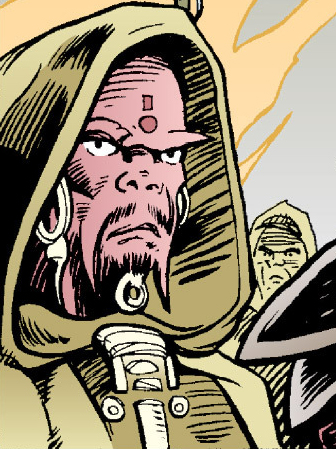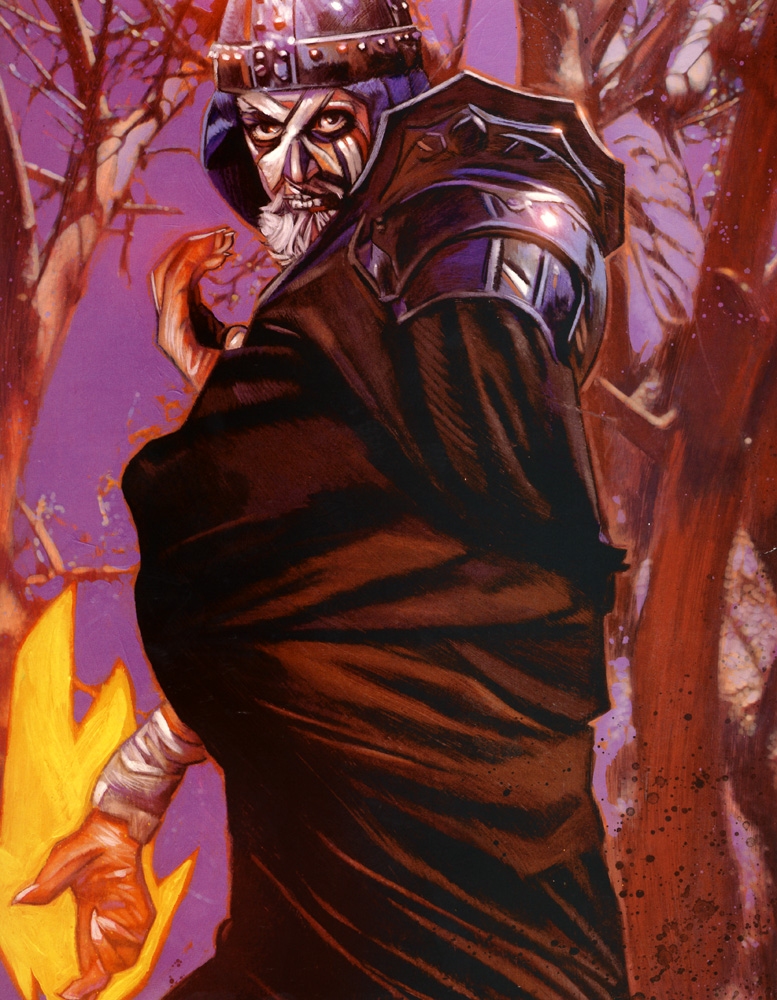As a subspecies of the Sith race, the ancient Kissai presumably originated on Korriban. Since Sith society lasted as such for hundreds of centuries—from roughly 100,000 BBY, it is presumed that the Kissai also had an ancient history. Amongst the Sith the Kissai became the priests and spiritual leaders who would indoctrinate others in the teachings of the Sith.
Except for the brief unification of their species under King Adas in his empire, Sith society was fragmented, with many individual Sith Lords ruling independent fiefdoms, most of them attempting to claim Adas's title of Sith'ari and unite their kind. When the Massassi and Kissai fled Korriban to resettle on Ziost after Adas' death following the war on Korriban with the Rakata, the Kissai oversaw the rebuilding efforts.
Some Kissai priests interpreted the death of their Sith'ari in the Invasion of Korriban as a sign to reject the Sith point of view of the dark side of the Force. These heretics were banished from the Sith homeworld, following their instincts to the Force-soaked world Tund.

A Kissai watches Ludo Kressh and Naga Sadow fight during the Funeral of Marka Ragnos.
Following the Great Hyperspace War, this pure-blooded Sith society became the Sorcerers of Tund, combining science, ontology, and magic. Convinced by their Rakatan interactions that all sentients are Force-sensitive, and discarding the Siths' view of the Force, the Sorcerers of Tund proclaimed that the omnipresence of the Force or "the Unity" illuminates the deception of dualities and multiplicity. Their cosmology viewed life as perfectly harmonious and the existence of true opposites as an illusion.
The sorcerers had interactions with early Jedi, who viewed them as merely another Force sect, like the Jal Shey or Zeison Sha. However, following the Restoration—and Karnak Tetsu's reign of terror after the Great Sith War—the Jedi labeled the sorcerers' beliefs as unqualified heresy. Unsurprisingly, the sorcerers were reticent in accepting outlanders, believing that only true Sith can grasp their truth. On one occasion, however, they welcomed the few remaining Massassi and Kissai, descended from outcasts much like themselves after the Great Sith War.
These descendants of Kissai who fled to Tund continued to live on through the many centuries until just before the rise of the Empire; where the Croke Rokur Gepta learned all he could from the Sorcerers and then he slew them all. Rokur Gepta then used a unique bioweapon, the electromagnetic torpedo on Tund. The green energies contained in the torpedo killed every life form on the planet.

The Sorcerers of Tund were descendants of exiled Kissai.
However, the descendants of those Kissai who did not get exiled and instead fled to Ziost after the death of the Sith'ari were eventually enslaved and absorbed into the Sith Empire after the arrival of Dark Jedi Exiles on Korriban in 6900 BBY. Unlike Massassi, who were transformed into soldiers for various Sith Lords, Kissai in the Sith Empire were largely left on Ziost as the servants of other Sith Lords and several, such as Marka Ragnos and Naga Sadow, reached very high positions in the Empire due to their priest status.
After the end of the Great Hyperspace war and the fall of the Sith Empire, Kissai as well as Massassai were not often found in Republic space. If any adventurers of these subspecies did happen to travel within Republic space, most beings in the galaxy would not recognize a Kissai or Massassi at first glance, even though members of these subspecies generally draw attention to themselves through their appearance.
The Kissai have been largely unheard-of since the acceptance of the Kissai and Massassi into the Sorcerers of Tund after Great Sith War and reports of isolated villages of both Kissai and Massassi on Korriban and Tund, although there is no record of them and the rest of the Sith species ever becoming extinct.
Kissai were loyal and capable allies who preferred to work with others, making them excellent aides and assistants. They responded well to instruction and were adaptable despite great adversity. The Kissai were just as ruthless as the Massassi, but they were more intelligent and observant. Their strict cultural standards demanded that they serve their masters well, a trait instilled in them by the Dark Jedi who first enslaved their species.
- Evil Never Dies: The Sith Dynasties on Hyperspace
- Knights of the Old Republic Campaign Guide
- Book of Sith: Secrets from the Dark Side